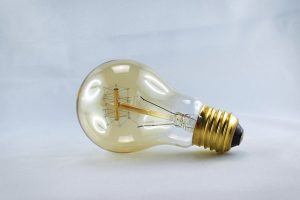
Featuring a grey-white color, tungsten is a versatile metal that’s used in a wide range of applications. It’s strong, conductive and exhibits many other properties that make it an attractive choice of metal. Even if you’re familiar with tungsten, though, there are probably some things you don’t know about. Below are five fun facts about tungsten.
#1) Highest Melting Point of All Metals
You might be surprised to learn that tungsten has the highest melting point of all metals. Like all metals, it will melt when exposed to enough heat. With a melting point of over 3,000 degrees Fahrenheit, however, it takes more heat to melt tungsten than any other metal on the planet. To put that number into perspective, the melting point of aluminum is just 1,221 degrees Fahrenheit.
#2) Highest Tensile Strength
Not only does tungsten have the highest melting point of all metals, but it also has the highest tensile strength. Tensile strength, of course, refers to a material’s ability to withstand force or pressure without breaking. Tungsten has a tensile strength of about 50,000 to 60,000 pounds per square inches (PSI), which is more than any other material. Unless it’s exposed to 60,000 PSI or more, it shouldn’t break.
#3) Used in Light Bulbs
Tungsten is frequently used in light bulbs where it serves as the filament for their heating elements. Incandescent light bulbs, for instance, often feature a tungsten-based filament. When activated, the tungsten filament heats up, thereby producing light. Tungsten works well in light bulb filament because of its highly conductive properties. it’s able to easily conduct electricity, which is responsible for creating light. As electricity flows through the tungsten filament, the light bulb illuminates.
#4) Used in Alloys
Tungsten is also used in the production of many alloys. A common example is high-speed steel. Depending on the particularly type, high-speed steel may contain anywhere from 10% to 20% tungsten, with the remaining material consisting of iron and carbon. Tungsten is ideal for use in alloys because of its high tensile strength. When added to an otherwise soft or weak metal, it creates a new and stronger alloy.
#5) Substitution for Gold
Finally, tungsten is often used as a substitution for gold. It has a similar tungsten, allowing it to mimic the physical properties of gold. With that said, tungsten is significantly harder than gold, which makes it an even more desirable material for jewelry. Therefore, jewelers often use tungsten to create rings, necklaces and other jewelry instead of gold.
